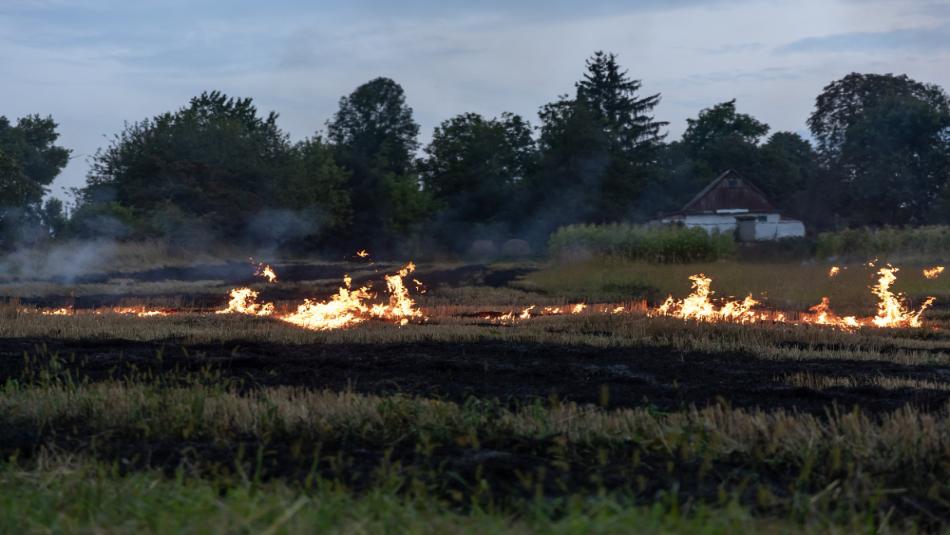
Indore, Madhya Pradesh:
The Madhya Pradesh administration has taken a strict stance on the issue of stubble burning (known locally as "Narwai") after the harvest season. With concerns rising over environmental damage and the decreasing fertility of farmland, the government has implemented firm measures. Farmers found burning crop residue in their fields will now face heavy penalties and even legal action.
To curb stubble burning incidents after the wheat harvest, a special awareness campaign has been launched in Indore district. A promotional vehicle, flagged off by Collector Ashish Singh, will travel to various village panchayats to educate farmers.
Officials from the Agriculture Department, patwaris, and panchayat secretaries will jointly conduct village-level farmer interaction programs. These sessions will inform farmers about the harmful effects of stubble burning and suggest alternative residue management practices.
The government has categorized fines based on landholding size:
According to Agriculture Deputy Director C.L. Kewra, stubble burning causes multiple serious problems:
Farmers are encouraged to adopt the following solutions instead of burning residue:
Crop Residue as an Income Source: According to the district administration and agriculture department, proper use of crop residue can generate additional income for farmers. It can be used as fodder for livestock, organic compost for fields, and helps preserve soil structure. Moreover, this contributes to climate control by reducing environmental pollution.
This government initiative aims not only to protect the environment but also to promote sustainable agriculture practices. With proper awareness and responsible action, farmers can avoid penalties and also unlock new income opportunities by managing crop residue effectively.
Read More- Eliminate flower fall and insects in eggplant, Adopt these effective remedies
Latest Update